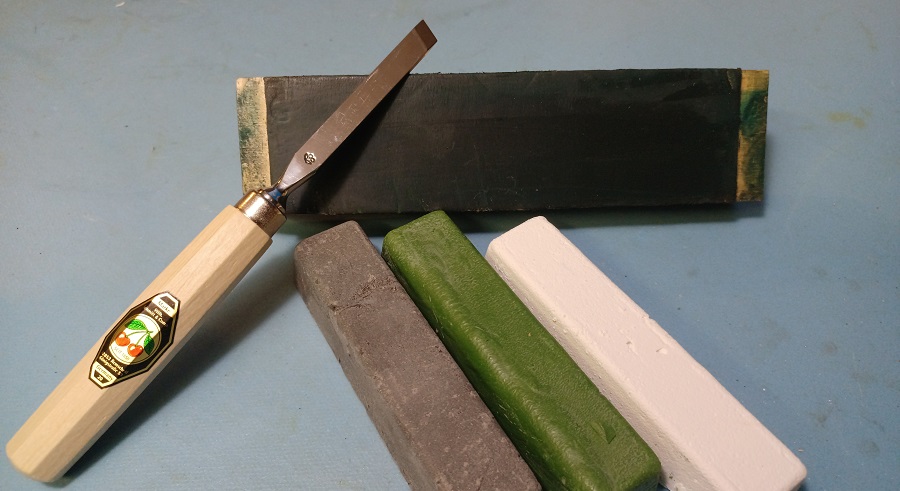I don't know about you, but I've got a drawer full of various compounds, most of which came as toss-ins with belts or strops I've purchased over the years. I was curious
if there was any rhyme or reason to the color scheme (black, white, green, red, etc.), or any consistency within brands/colors. My conclusion is that there is not. I found a pretty good source which lists the approximate grit ratings of a number of brands. Maybe you'll find it useful:
In order to achieve the sharpest knife or tool edge possible, honing the tool with a strop after sharpening is mandatory. Without further refining the…

carvingisfun.com
I've also come to the same conclusion with most of the common stick-type compounds. I don't put much faith in the actual rating, grit-wise, or the color, to tell me what to expect from them. To some degree, knowing the TYPE of grit (aluminum oxide, SiC, chromium oxide, iron oxide) is more useful in deciding which steels would be best-served by them. But the actual size of the grit, according to the rating, is of secondary importance.
With stropping on leather or fabric in particular, and even with any use of even the coarsest buffing compounds on soft buffing wheels, the substrate underneath the compound will have more impact on how the compound works, and to what finish. With any soft backing, most of these compounds tend to polish to some degree, because their backing substrates aren't firm enough to make them really dig DEEP into the steel. More difference would be seen on very hard substrates (metal, stone, glass), in terms of how aggressively the compounds work and how deep the scratches left will be.
And there'll also be great variation in performance between different vendors' recipes for their 'green', 'white', 'black' compounds as well. And to muddy the waters further, some of those will also include a mix of other abrasive grit types or sizes. And the mfrs. will NEVER reveal what those are.
But most of these compounds are very inexpensive, for the bulk you buy. One stick will be a lifetime supply for most stropping hobbyists. So, it pays to experiment with many of them, and see what you like.

 carvingisfun.com
carvingisfun.com

